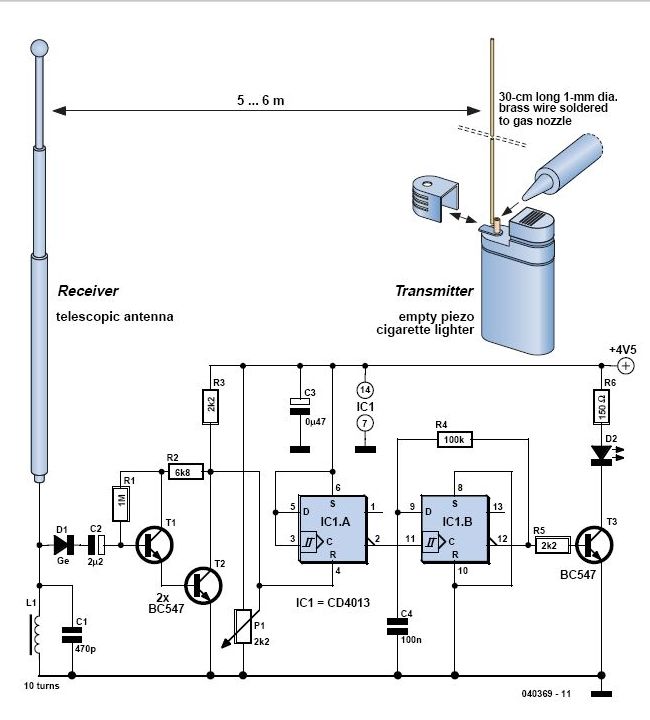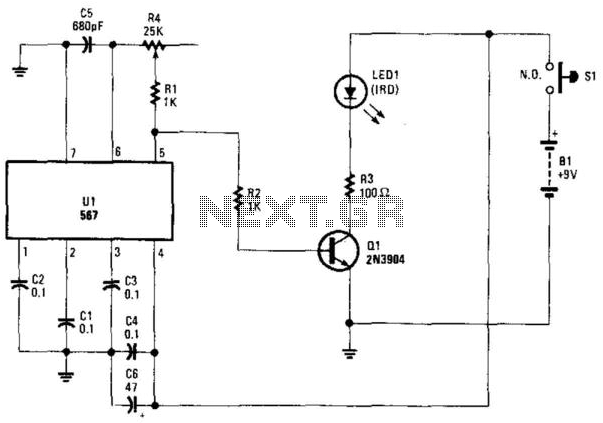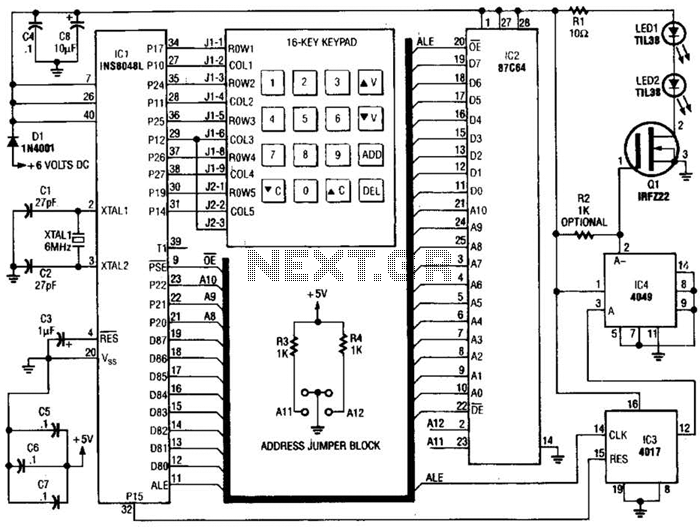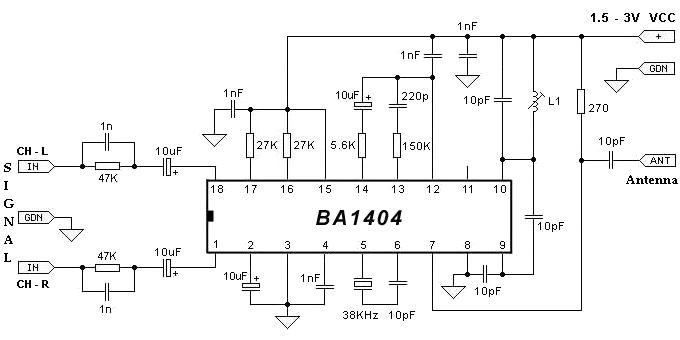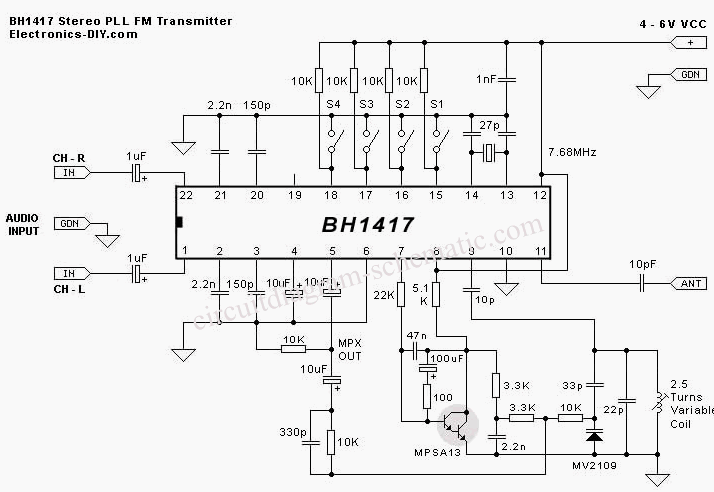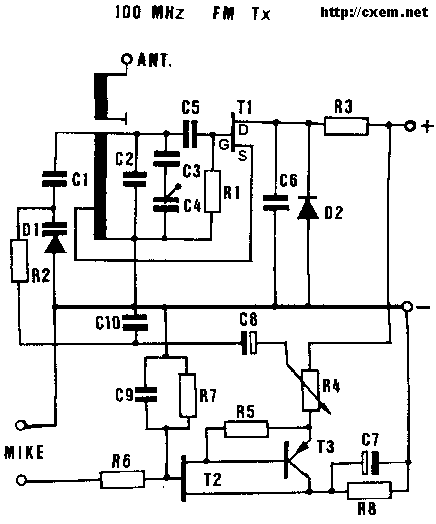
AM DSB TRANSMITTER FOR HAMS
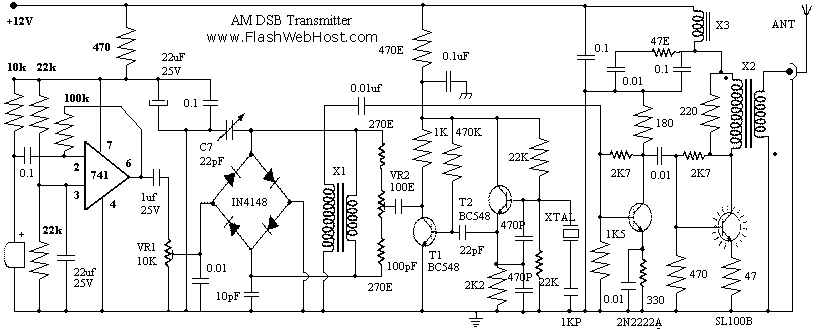
The circuit of AM transmitter is designed to transmit (amplitude modulated) DSB (double side band) signals. A modulated AM signal consists of a carrier and two symmetrically spaced side bands. The two side bands have the same amplitude and carry the same information. In fact, the carrier itself conveys or carries no information. In a 100% modulated AM signal, 2/3 of the power is wasted in the carrier and only 1/6th of the power is contained in each side band.
The AM transmitter circuit operates by generating an amplitude-modulated signal that consists of a carrier wave and two sidebands. The carrier frequency is the central frequency around which the sidebands are generated. The two sidebands, known as the upper sideband (USB) and lower sideband (LSB), are positioned symmetrically around the carrier frequency and carry the same information as the modulating signal.
In the design of the AM transmitter, various stages are involved, including the oscillator, modulator, and power amplifier. The oscillator generates a stable carrier frequency, which is typically achieved using a crystal oscillator or a phase-locked loop (PLL). The modulator combines the carrier wave with the audio or information signal, using a method such as linear modulation or switching modulation.
The power amplifier stage is crucial as it boosts the modulated signal to a level suitable for transmission. This stage must be designed to handle the required output power while maintaining linearity to prevent distortion of the modulated signal.
It is important to note that in a 100% modulated AM signal, a significant portion of the power (approximately two-thirds) is dissipated in the carrier, which does not carry any information. Consequently, only one-sixth of the total power is allocated to each of the sidebands, which actually convey the information being transmitted. This characteristic highlights the inefficiency associated with traditional AM transmission, prompting the exploration of alternative modulation techniques that optimize power usage and signal quality.
Furthermore, the design considerations for an AM transmitter include frequency stability, linearity, and efficiency. Adequate filtering must be implemented to suppress unwanted harmonics and spurious emissions, ensuring compliance with regulatory standards. Overall, the AM transmitter circuit is a fundamental component in the field of analog communication, enabling the transmission of audio and data over radio frequencies.The circuit of AM transmitter is designed to transmit (amplitude modulated) DSB (double side band) signals. A modulated AM signal consists of a carrier and two symetrically spaced side bands. The two side bands have the same amplitude and carry the same information. In fact, the carrier itself coveys or carries no information. In a 100% modulated AM signal 2/3 rd of the power is wasted in the carrier and only 1/6th of the power is contained in each side band.
🔗 External reference
The AM transmitter circuit operates by generating an amplitude-modulated signal that consists of a carrier wave and two sidebands. The carrier frequency is the central frequency around which the sidebands are generated. The two sidebands, known as the upper sideband (USB) and lower sideband (LSB), are positioned symmetrically around the carrier frequency and carry the same information as the modulating signal.
In the design of the AM transmitter, various stages are involved, including the oscillator, modulator, and power amplifier. The oscillator generates a stable carrier frequency, which is typically achieved using a crystal oscillator or a phase-locked loop (PLL). The modulator combines the carrier wave with the audio or information signal, using a method such as linear modulation or switching modulation.
The power amplifier stage is crucial as it boosts the modulated signal to a level suitable for transmission. This stage must be designed to handle the required output power while maintaining linearity to prevent distortion of the modulated signal.
It is important to note that in a 100% modulated AM signal, a significant portion of the power (approximately two-thirds) is dissipated in the carrier, which does not carry any information. Consequently, only one-sixth of the total power is allocated to each of the sidebands, which actually convey the information being transmitted. This characteristic highlights the inefficiency associated with traditional AM transmission, prompting the exploration of alternative modulation techniques that optimize power usage and signal quality.
Furthermore, the design considerations for an AM transmitter include frequency stability, linearity, and efficiency. Adequate filtering must be implemented to suppress unwanted harmonics and spurious emissions, ensuring compliance with regulatory standards. Overall, the AM transmitter circuit is a fundamental component in the field of analog communication, enabling the transmission of audio and data over radio frequencies.The circuit of AM transmitter is designed to transmit (amplitude modulated) DSB (double side band) signals. A modulated AM signal consists of a carrier and two symetrically spaced side bands. The two side bands have the same amplitude and carry the same information. In fact, the carrier itself coveys or carries no information. In a 100% modulated AM signal 2/3 rd of the power is wasted in the carrier and only 1/6th of the power is contained in each side band.
🔗 External reference
